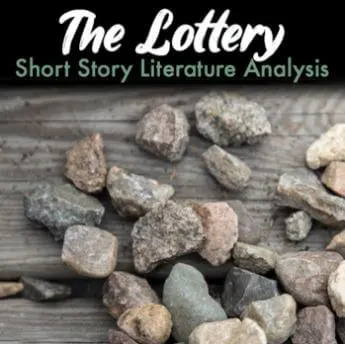Learn why short stories are my favorite tool for teaching mood and tone. Additionally, save yourself from scrounging the web as you look for suitable titles to teach. This post includes 6 of the best short stories for teaching mood and tone.
Looking for resources to help with teaching mood and tone? If you don’t already know, I’m a big fan of using short stories to teach all the things. Mood and tone are no exception. Short stories provide the perfect stepping stone for students as they learn to understand, recognize, and analyze a story’s mood and tone.
The Importance of Teaching Mood and Tone
Chances are, your students have been told to “watch their tone” or asked, “what’s with the mood?” However, identifying and understanding mood and tone can be challenging when it comes to literature.
For one, these literary elements are rooted in a very abstract element of emotion. Mood and tone are less tangible than other literary elements students learn, like setting or character. However, once students understand how to dig into the story to reveal evidence of mood and tone, they will understand and enjoy literature on a new level.
Another challenge with mood and tone is that students often confuse the two, using them interchangeably. It probably doesn’t help that tone can affect mood and vice versa. Therefore, when you dive into teaching these two elements, it’s best to start by explicitly teaching the difference between them:
- Mood = the feeling one gets as they read a text (i.e., the atmosphere)
- Tone = the author’s (or narrator’s) attitude toward the subject of the text
Providing several examples of these elements in action will help students understand the difference between the two. And that, my friend, is where the beloved short story comes into play.
The Benefit of Teaching Mood and Tone with Short Stories
Short stories allow students to focus on the specific elements of a story that help emphasize its mood and tone. Instead of stressing to keep track of a plot and characters over hundreds of pages, students can focus on elements like setting, imagery, and diction. I’ve found that students can hone in on the details more purposefully and precisely when the story is more concise. Then, once they build their skills and gain confidence, students will be ready to tackle the tone and mood of longer, more complex literature.
When introducing mood and tone, I recommend reading a passage or short story aloud with your students. Then, as you read, point out the words, phrases, and descriptions that help evoke the story’s mood and tone. This approach will not only help students see these literary devices in action but will serve as a bridge to independent analysis.
The Best Short Stories for Teaching Mood and Tone
When teaching any literary element, finding the right text is vital. I’ve seen the most success teaching mood and tone when using dark, eerie, and suspenseful short stories. First of all, students always enjoy them. Second, students tend to pick up on the mood and tone of this genre quickly, allowing them to apply what you’ve taught them about these literary elements.
Check out the titles below if you’re gearing up to teach mood and tone in your secondary classroom.
1. “The Tell-Tale Heart” by Edgar Allan Poe
No author is better for teaching tone and mood than Edgar Allan Poe. He is the master of all things dark and suspenseful, a true mark of Gothic literature. While many of his stories will get the job done when teaching mood and tone, “The Tell-Tale Heart” might be my favorite.
Truthfully, Poe masters the dark, suspenseful and anxious mood as the narrator struggles in the wake of his murderous actions. Students will quickly pick up on the mood as it reflects the narrator’s evident mental decline toward anxious madness. Similarly, the overall tone riddled with manic statements and anxious thoughts supports the theme of guilt as a powerful emotion.
2. “The Lottery” by Shirley Jackson
Shirley Jackson’s “The Lottery” is another fantastic tool for teaching mood and tone. Despite beginning with a pleasant and pastoral description of an unnamed small town, the story’s mood takes a sharp turn the moment the annual titular lottery begins. From there, students will note a change in the mood from peaceful to anxious and, eventually, pure horror.
While the story’s mood shifts dramatically with the plot, Jackson’s tone never changes. It’s this eerie contrast throughout the story that makes it so profound, causing the reader to wonder how the events of the story appear so normalized. Using a rather easy-going tone despite the surprising and horrific plot that unfolds makes Jackson’s thoughts around tradition all the more apparent.
3.“The Monkey’s Paw” by W.W. Jacobs
Similar to Jackson’s “The Lottery,” Jacobs’ “The Monkey’s Paw” reveals a stark contrast in mood from the story’s beginning to its end. However, unlike “The Lottery,” the tone in this short story also shifts. Despite the stormy weather, the story begins with a rather light-hearted tone. The White family goes about their night, playing a friendly game of chess before entertaining a guest who brings a mysterious (and supposedly dangerous) monkey’s paw.
However, as the storm progresses in the story’s second part, so does the ominous mood and suspenseful tone. Ultimately, this progression foreshadows the story’s tragic ending. Students will note how the stormy weather mimics the character’s increasing fears and uncertainties, both contributing to the story’s growing sense of doom and gloom. Students will be able to trace how the story’s mood and tone shift as the Whites struggle to understand (and fear) the power of the titular monkey’s paw.
4.“The Devil and Tom Walker” by Washington Irving
“The Devil and Tom Walker” is a classic example of the darker side of literary romanticism, reading like an eerie legend or ghost story thanks to the dark and mysterious mood and ominous tone. Irving is known for his descriptive settings, and this story is no different. The swampy and gloomy forest where Tom Walker ultimately strikes a deal with the Devil is the perfect setting to emphasize the story’s increasingly sinister and suspenseful mood.
Irving’s powerful diction as he describes the setting and characters throughout the story provides plenty of clues students need to determine the tale’s increasingly eerie mood and foreboding tone. In the end, the dark and ominous tone of the story reflects Irving’s warning about greed, selfishness, and corruption.
5.“To Build a Fire” by Jack London
In “To Build a Fire,” London tells the story of a man’s will (turned struggle) to survive the extreme winter of the Yukon. Thanks to London’s direct yet descriptive prose, students can fully immerse themselves in the harsh winter the man and his dog face throughout the story. After all, this setting helps make the tone and mood that much clearer.
While the tone is very direct and lacks emotion, the overall setting and the man’s struggle to survive in nature create a mood that slowly changes as the plot unfolds. The mood shifts as the stubborn protagonist goes from determined to frustrated to fearful as an impending death looms.
6. “The Yellow Wallpaper” by Charlotte Perkins Gilman
Despite being one of the more complex texts on this list, “The Yellow Wallpaper” is a fantastic resource for teaching mood and tone with more advanced students. Perkins Gilman hints at the story’s mood and tone right from the start, as the ‘ill’ narrator questions the “hereditary estate” she and her husband are staying in for the summer. Yet, the tone remains predominantly matter-of-fact in the beginning.
However, students will notice a switch as the tone becomes rich with sarcasm and anger, mirroring Perkins Gilman’s frustration over how women were treated in the early twentieth century. Similarly, students will feel a shift in mood as the narrator falls deeper into an anxious state as the story comes to an end.
Five Tips for Teaching Mood and Tone with Short Stories
TIP #1: Understanding the power of words plays an imperative role in one’s ability to recognize mood and tone. Therefore, teaching a mini-lesson on diction and connotation is helpful before diving into mood and tone. This helps students understand how much meaning can be packed into a single word or phrase.
TIP #2: Encourage the use of annotations. Have students annotate a text for words that emphasize tone and mood, jotting down any connotations the words evoke in the margins. Additionally, have them note any changes in mood or tone throughout a story, explaining how these changes often reflect the plot or character development.
TIP #3: Thanks to the abstract nature of these literary elements, students struggle to explain their thinking. They might “feel” the tone or mood but can’t always explain their reasoning behind it. Therefore, promoting them with questions like, “What in the text makes you think that?” can help them connect the dots.
TIP #4: Provide graphic organizers to help students track tone and mood as they read. There are various graphic organizers you can use. Regardless, the goal is to help them note textual evidence that helps them draw conclusions regarding tone and mood.
TIP #5: Looking for a fun assessment or activity? Ask students to create a soundtrack that reflects the tone and mood of a particular story. Once they select a handful of songs, have them write a brief explanation for each to really drive their understanding home.
It doesn’t matter if we’re talking about a short story, poem, or full-length novel, mood and tone are two essential literary elements for students to know. These literary elements allow students to enjoy and appreciate the text fully while also unlocking a new level of comprehension.
If you have any more tips for teaching mood and tone, help your fellow teachers out and leave a comment below. Have more short story titles to add to my list in this post? Share those in the comments below too. And if you enjoyed this post be sure to check out my other posts about using short stories to teach other literary elements, ranging from theme and character to plot and inference.





